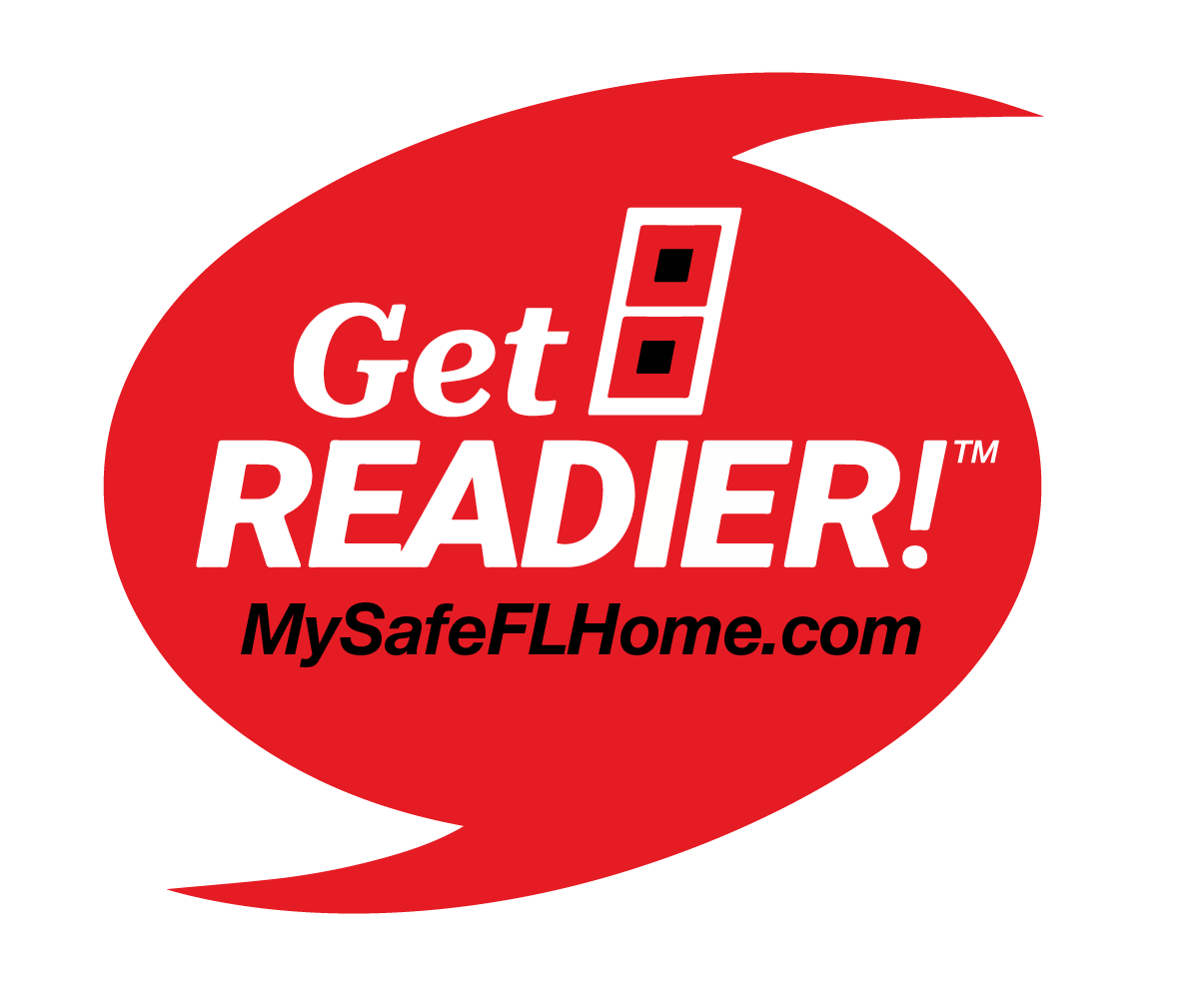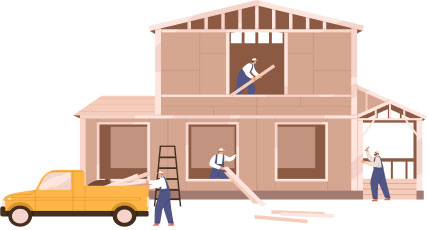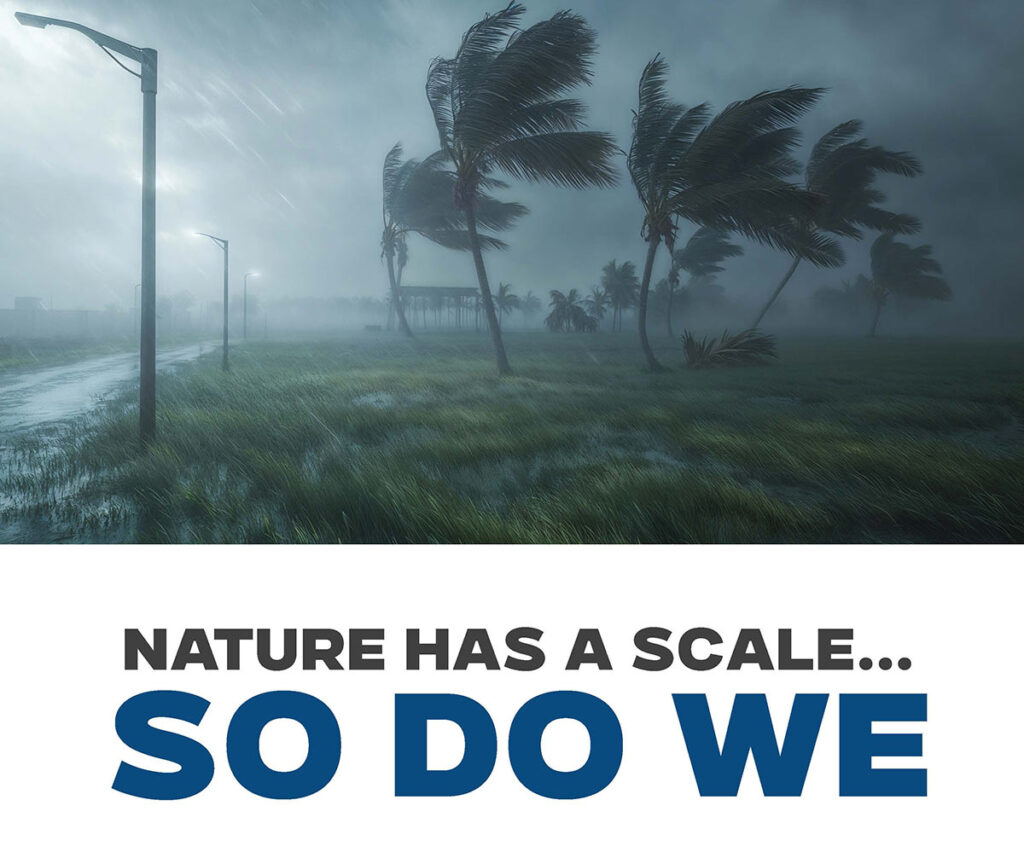
Strengthen Your Home &
Lower Your Insurance Costs.
Retrofitting for Florida Homeowners.

ABOUT GET READIER
BENEFITS OF RETROFITTING
Florida is a great place to live, work, and raise a family. But living in Florida can also mean coping with high home insurance premiums, and many homeowners are always on the lookout for ways to find relief from rising costs. It’s important to know that 40% of all Atlantic hurricanes impact Florida and all Floridians live within 70 miles of the water. In addition, millions of homes in Florida were built prior to 2002 and the implementation of new building codes, which means they may not have certain features that are strong enough to withstand severe weather, including the wind speeds and flying debris associated with hurricanes.
One smart solution is retrofitting older homes with improvements to the roof, windows, exterior doors and garage doors to bring them up to code. Retrofitting can include adding impact-resistant windows, strengthening roof-to-deck attachments, and upgrading exterior doors, including garage doors. These improvements can help protect a home from wind and water damage, keep families and belongings safe during severe weather, provide relief from high insurance costs, and even increase the value of the home.
As you evaluate your own home’s ability to withstand natural disasters, we encourage you to keep in mind that the costs associated with retrofitting are small expenses compared to rebuilding after a major weather event.
5 KEY RETROFITTING IMPROVEMENTS
As a Florida homeowner, it’s vital to be aware of these five key retrofitting improvements, the impact they can have on strengthening your home, the peace of mind they can provide, and the important role they play in lowering the cost of your home insurance.
STRENGTHEN ROOF-TO-DECK ATTACHMENT
 If your roof has shingles nailed to plywood sheets, you can strengthen your roof deck attachment by adding more nails. For example, increasing the number of nails from three to four. In addition, using a ring shank nail is the optimal choice here and is included in the 2022 building code. This nail provides stronger grip as pressure increases and helps prevent plywood from blowing off during a hurricane, making your roof more resilient and less likely to be damaged in severe weather. By investing in this improvement, you can better protect your home and potentially save on insurance premiums.
If your roof has shingles nailed to plywood sheets, you can strengthen your roof deck attachment by adding more nails. For example, increasing the number of nails from three to four. In addition, using a ring shank nail is the optimal choice here and is included in the 2022 building code. This nail provides stronger grip as pressure increases and helps prevent plywood from blowing off during a hurricane, making your roof more resilient and less likely to be damaged in severe weather. By investing in this improvement, you can better protect your home and potentially save on insurance premiums.REINFORCE ROOF-TO-WALL-CONNECTIONS
ADD SECONDARY WATER RESISTANCE
UPGRADE WINDOW PROTECTION
UPGRADE EXTERIOR DOORS AND GARAGE DOORS
STEPS TO GET STARTED
Get a wind-mitigation inspection of your home.
Take the first step and get a wind-mitigation inspection to identify your home’s vulnerable areas. The inspection cost can be as low as $125 for homes up to 2,000 square feet. A certified inspector will assess your home’s current condition and provide a detailed report outlining the specific improvements you can make to strengthen your home against severe weather events, including hurricanes. The inspection report will serve as your roadmap to retrofitting your home with proper improvements, ensuring that you focus on the most critical areas first.
Contact your insurance agent or carrier.
As a next step, we recommend contacting your insurance agent or carrier to share and review the wind-mitigation report of your home. There are two reasons for doing this. The first is to confirm that you are currently receiving all lawful discounts on the wind portion of your insurance premium. The second would be to review the specific improvements your report is recommending and discuss the potential discounts you could receive on your insurance premium by making them, along with any other suggestions they may have for you to save.
Estimate the costs of the improvements.
This step will help you budget for the retrofitting process and prioritize the improvements based on your available funds. You may use our Get Readier Cost Calculator on this website to generate a cost estimate for improvements in your region. From there we suggest researching at least three local contractors with experience in wind-mitigation improvements and are licensed with the state of Florida, and contact them to provide you with a detailed cost estimate for the improvement or improvements you would like to have completed. Don’t hesitate to ask for references and check online reviews to ensure you’re working with a contractor you can trust. Remember, the quality of the work is just as important as the improvements themselves when it comes to protecting your home. One available option to help you locate reputable contractors in your area is to visit flsafepros.com.
Choose a contractor to complete the improvement work.
With your contractor research and cost estimates in hand, it’s time to choose a local contractor and establish terms to complete the work. Before signing any contracts and making any payments to commence work, confirm that your selected contractor will obtain all necessary permits, has proper workers’ compensation insurance, will perform the work in accordance with all local and state regulations, and is aware of the certifications required upon completion of the work. We also recommend that you make sure the work is inspected and approved before making final payment.
Verify your improvements and notify your insurance agent or carrier.
After the retrofitting improvement work has been completed, hire a qualified inspector to perform a wind-mitigation inspection. This inspection will verify the improvements have been made correctly and your home is now better equipped to withstand hurricane-force winds. The inspector will provide you with a wind-mitigation form, which you can then submit to your home insurance agent or carrier so you can receive your discounts and start saving on your insurance premium.
HOW MUCH YOU COULD SAVE
Investing in wind-mitigation improvements not only strengthens your home against hurricanes but can also lead to significant savings on your home insurance premiums. It’s a Florida Law that insurance companies must offer discounts, credits, and reduced deductibles to homeowners who retrofit their homes to be more hurricane-resistant.
We estimate that homeowners could save anywhere from 5% to 40% on their insurance premiums. As an example, 60% of My Safe Florida Home participants saved an average of $1,000 on their annual premium after making improvements.
The amount you could save depends on many factors, such as the size of your home, its location, and the specific retrofitting improvements you choose to make. But the long-term benefits of retrofitting your Florida home are clear – a stronger and safer home, more peace of mind, more home value, and more money in your pocket.

FEDERAL ALLIANCE FOR SAFE HOMES (FLASH)


Get Readier
Cost Calculator
This calculator is for reference planning ONLY. Individual contractor prices can vary significantly due to availability and inflation. Always obtain several bids from licensed professionals before proceeding with any work and DO NOT rely solely on these estimates for exact pricing.
Calculated estimates are based on a typical 3-bed, 2-bath, 1,750 sq ft home with a 400 sq ft garage, approximately 30 years-old using data as of 11/15/22 from Homewyse.com. For more specific pricing based on your zip code, please visit their website.
Cost Calculator items may not apply to items specifically listed in your Wind Mitigation Inspection Report.
While Thinking About Retrofitting Improvements For Your Home To Meet Modern Era Building Codes, Consider This Fact:
For Florida homes built to meet 1990’s era building codes, the Average Annual Damage caused by hurricanes totals $28,448, while homes built to meet 2022 building codes experience an Average Annual Damage of only $4,603.
Research provided by Moody’s Corporation, a global risk assessment firm.